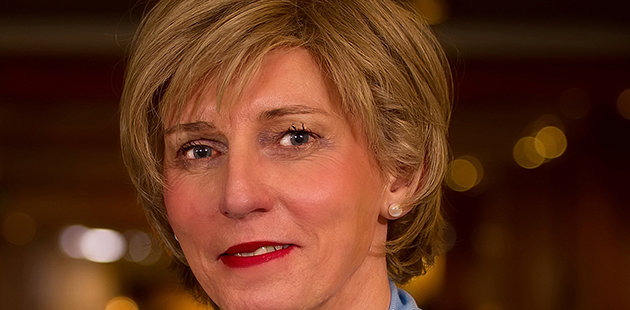 Bruce Jenner’s recent coming out as a trans woman in a US television interview allows us to shine a spotlight on the Australian media’s representation of trans people, and trans women in particular. Much media attention has been given to Jenner’s coming out, which, thanks to her high profile status as an Olympic gold medallist and reality-TV star, proved a ratings success.
Bruce Jenner’s recent coming out as a trans woman in a US television interview allows us to shine a spotlight on the Australian media’s representation of trans people, and trans women in particular. Much media attention has been given to Jenner’s coming out, which, thanks to her high profile status as an Olympic gold medallist and reality-TV star, proved a ratings success.
As Jenner’s case testifies, coming out is a moment of fascination for the media. On the one hand, the coming out of a trans celebrity provides much-needed visibility for a group that is among our most misunderstood, ridiculed, and marginalised. On the other hand, the intense focus on the coming out process obscures many of the health, legal, institutional, and interpersonal issues that trans people face in their everyday lives.
Coming out stories
The majority of people who come out willingly and without coercion, either to themselves, to friends and family members, or to everyone, would say there is a sense of relief in the act. But coming out as trans is generally not the same as for a lesbian, gay or bisexual (LGB) person. Whereas the LGB narrative usually shows coming out as a climax in which the person overcomes a difficult internal crisis (i.e., being in the closet), coming out as a trans person is often only the start of a long journey. As American trans activist Julia Serano recently wrote:
We often have trouble obtaining basic legal documents and rights. The fact that we are trans often complicates our experiences during job interviews, in medical settings, or in everyday human interactions … Trans people, and especially trans people of colour, disproportionately experience high levels of harassment and physical assault, workplace discrimination, unemployment, poverty and homelessness. Many, including myself, feel that these are our community’s most pressing issues. Yet they get less airtime than the usual Jenner-type exposés.
Beyond visibility
Other everyday concerns include the cost and difficulty obtaining hormone therapy or transition-related surgery. Another is the high rate of mental health problems. A recent study found that trans people in Australia were four-times more likely to have ever been diagnosed with depression and approximately 1.5 times more likely to have ever been diagnosed with an anxiety disorder than the general population.
Discrimination and difficulty accessing healthcare were strongly associated with this. Trans people are at risk of insensitive reporting and sensationalisation by the media. This is often the case if they are outed without their consent in the press and their identities disrespected. Such was the example of Brigitte Fell who was outed to the nation by Zoo Weekly magazine with the headline Is Your Girlfriend a Bloke?
Last month, a trans woman was arrested in a Gold Coast park. Her status as a trans person bore no direct relevance to the arrest, yet the Gold Coast Bulletin unnecessarily identified her as “transgender” in the headline, while the article included the phrase “pre-surgery transgender woman,” breaching her medical privacy. Those descriptions paved the way for lurid and sexualised photo captions, including, “the high slit on the dress left little to the imagination”.
In October 2014, The Courier-Mail reported the murder of Mayang Prasetyo by her husband with sensationalised headlines. The newspaper’s handling of the story sparked outrage, leading to a social media backlash and an online petition calling for an apology from the newspaper. The front cover included an image of Prasetyo posing in a bikini, accompanied by the distasteful headline, “Monster Chef and the She Male.” The first paragraph added that she was a “‘high class’ prostitute” murdered in her “swank” Brisbane apartment.
The article noted her apparent rate per hour and her marketing description as a “top class Asian shemale”. There is no evidence, however, that any of these details of Prasetyo’s life had a bearing on her death. Despite being a victim of domestic violence and murder, she was hyperfeminised, sexualised, and exoticised as an Asian trans sex worker.
The “exclusive” interview with her mother later in the story provided a feeble attempt to humanise Prasetyo as the breadwinner for her Indonesian family. The Courier-Mail was not alone in its approach. Photographs of Prasetyo posing in a bikini made it to national TV screens, news websites, and newspapers.
A different narrative
In stark contrast is the reportage of Cate McGregor’s coming out and life as an openly trans woman. The positive reporting is likely due to several factors, including her position as the highest ranking trans officer in the Australian armed forces and a Member of the Order of Australia. McGregor also has influential friends, from Prime Minister Tony Abbott to news.com.au political editor Malcolm Farr.
As one of the country’s highest profile trans women, Cate McGregor has been lauded by the Australian media for sharing her personal story of her years of struggle to accept herself. Let us hope all trans people, celebrity or otherwise, will eventually be accorded the same level of respect in our media.
After Cate McGregor and Bruce Jenner, what now for trans rights?
Duc Dau, University of Western Australia
This article was originally published on The Conversation. Read the original article.
Image: Cate McGregor
